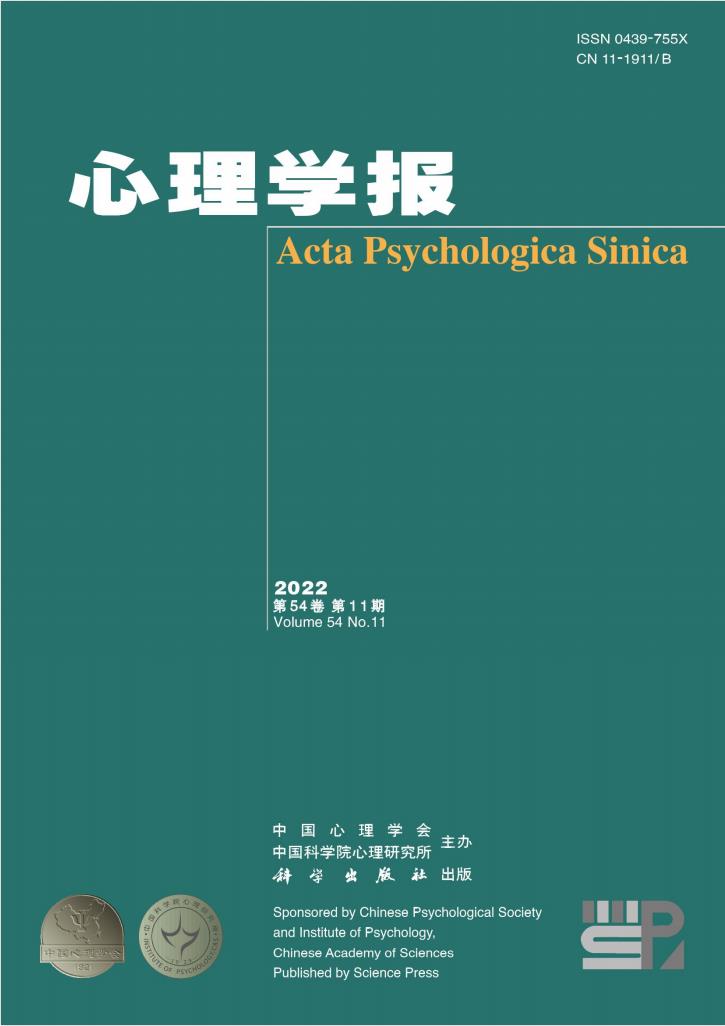倾向性自我建构与对群内外成员痛苦的移情关系——来自ERP的证据
IF 1.3
4区 心理学
Q3 PSYCHOLOGY, MULTIDISCIPLINARY
引用次数: 2
摘要
同情他人的痛苦是人类社会互动和发展的关键。先前的研究表明,疼痛移情受到许多因素的影响,包括被观察目标和观察者的不同特征。此外,观察者和目标之间的关系也起着重要作用。自我建构是一种人格特征,反映了人们认为自己与他人联系或分离的程度。最近,研究人员发现,时间自我建构启动可以调节移情神经对疼痛的反应,并改变神经对疼痛反应中的种族偏见。与暂时的情境性自我建构不同,倾向性自我建构是一种稳定的特质,其形成受到长期文化经验的影响。先前的ERP研究发现,倾向性自我建构比时间性自我建构更快地调节自我相关处理。因此,本研究探讨了倾向性自我建构是否与移情神经对他人痛苦的反应有关,以及群体偏见是否介导了这种调节。研究表明,对疼痛移情的时间过程包括早期的情感分享阶段和晚期的认知评估阶段。因此,我们假设倾向性的自我建构将与自动的情感分享或自上而下控制的对疼痛的移情过程相关。27名参与者参与了研究。参与者将从他们的同乡微信群和其他微信群中选择的图片建模。接下来,我们在参与单词启动范式时进行脑电图(EEG),在该范式中,单词线索(“内组”或“外组”)被呈现500毫秒,表明模型的身份,然后是被疼痛或非疼痛刺激触摸的模型面部的照片。参与者被要求通过用左手或右手食指按下按钮来判断照片中的模型是否感到疼痛。脑电图记录后,参与者对模型所感受到的疼痛强度以及他们看到每张照片时感受到的不愉快程度进行评分。参与者还完成了24个项目的七分量表SCS,以评估他们自我解释的相互依存性和独立性。ERP结果显示早期N2成分存在显著的组内偏倚。与非疼痛刺激相比,疼痛刺激引起了更大的负向转变,以应对组内面孔。在外群脸上没有观察到这种影响。N2分量先前已经与自动情绪共享相关联。在顶叶电极上的P3处也观察到长潜伏期的移情反应。在组内和组外面部条件下,疼痛刺激比非疼痛刺激引起更大的P3振幅。P3成分与疼痛移情的认知控制过程有关。重要的是,相关性分析揭示了在组内和组外面孔条件下,倾向性自我建构得分(相互依存减去独立得分)和P3的幅度差异(痛苦减去无痛苦刺激条件)之间的显著关系。此外,组内和组外面孔条件之间的相关系数相似。此外,我们观察到相互依存的自我解释水平与感知疼痛和自我不愉快的主观评级之间存在正相关关系。总之,本研究表明,在N2早期有显著的组内偏倚,但在P3晚期没有。此外,倾向性自我建构与组内和组外对疼痛的移情相关,并且高度相互依赖性与增强P3对他人疼痛的反应相关,而与组内成员无关。本文章由计算机程序翻译,如有差异,请以英文原文为准。
The relationship between dispositional self-construal and empathy foringroup and outgroup members’ pain: evidence from ERPs
Empathy to others’ pain is key to human social interaction and development. Previous studies suggest that pain empathy is influenced by numerous factors, including different characteristics of the observed target and the observer. Moreover, the relationship between an observer and the target also plays an important role. Self-construal, a personality trait, reflects the extent to which people consider themselves as connected to or separated from others. Recently, researchers have found temporal self-construal priming could modulate empathic neural responses to pain and change racial in-group bias measured in the neural response to pain. Unlike temporary, situational self-construal, the dispositional self-construal is a stable trait, the formation of which is influenced by long-term cultural experience. Previous ERP studies have found dispositional self-construal to modulate self-relevant processing more rapidly than temporal self-construal. Thus, the present study explores whether dispositional self-construal is related to empathic neural responses to others’ pain and whether in-group bias mediates such modulation. It has been shown that the temporal processing of empathy for pain consists of an early emotional sharing stage and a late cognitive evaluation stage. Accordingly, we assumed dispositional self-construal would correlate with either automatic emotional sharing or top-down controlled processes of empathy for pain. Twenty-seven participants study. participants the models the pictures selected from their fellow-townsman WeChat groups and other WeChat groups Next, we electroencephalography (EEG) while part in a word-priming paradigm, in which a word cue (“ingroup” or “outgroup”) was presented for 500 ms, indicating the identity of the model, followed by a picture of the model’s face touched either by painful or non-painful stimulation. Participants were instructed to judge whether the model in the picture was feeling pain by pressing a button using the left or right index fingers. After the EEG recording, participants rated the intensity of pain supposedly felt by the model as well as the degree of unpleasantness they felt when they saw each picture. Participants also completed the 24-item SCS on a seven-point scale to evaluate their interdependence and independence of self-construal. The ERP results showed a significant ingroup bias in the early N2 component. Painful stimuli elicited a greater negative shift relative to non-painful stimuli in response to ingroup faces. No such effect was observed on outgroup faces. The N2 component has previously been associated with automatic emotion sharing. A long latency empathic response was also observed at P3 over parietal electrodes. Painful stimuli elicited larger P3 amplitudes than the non-painful stimuli in both ingroup and outgroup face conditions. The P3 component is related to the cognitively controlled process of pain empathy. Importantly, correlation analysis revealed significant relationships between dispositional self-construal score (interdependence minus independence scores) and the amplitude difference (painful minus no-painful stimulus conditions) of P3 in both ingroup and outgroup face conditions. Furthermore, correlation coefficients were similar between ingroup and outgroup face conditions. In addition, we observed a positive relationship between the level of the interdependent self-construal and subjective rating of perceived pain and self-unpleasantness. In sum, the present study demonstrated a significant ingroup bias in the early N2 stage, but not in the late P3 stage. Moreover, dispositional self-construal correlated with both ingroup and outgroup empathy for pain, and high interdependence was associated with enhanced P3 response to other’s pain regardless of group membership.
求助全文
通过发布文献求助,成功后即可免费获取论文全文。
去求助
来源期刊

心理学报
Psychology-Psychology (all)
CiteScore
1.70
自引率
13.30%
发文量
1612
期刊介绍:
Acta Psychologica Sinica (ISSN 0439-755X) is a scholarly journal sponsored by the Chinese Psychological Society and the Institute of Psychology, Chinese Academy of Sciences, and published monthly by the Science Press.
Acta Psychologica Sinica has been included in many important national and international indexing systems such as SCOPUS (Elsevier), ESCI (Web of Science), PsycINFO (APA), CSCD. It is the flagship journal of the Chinese Psychological Society that publishes peer-reviewed original empirical studies and theoretical articles spanning the entire spectrum of scientific psychology.
Acta Psychologica Sinica publishes high-quality research that investigates the fundamental mechanisms of mind and behavior and aims to deliver scientific knowledge to enhance our understanding of culture and society. It welcomes submissions of manuscripts reporting research that is up-to-date, scientifically excellent, and of broad interest and significance.
 求助内容:
求助内容: 应助结果提醒方式:
应助结果提醒方式:


